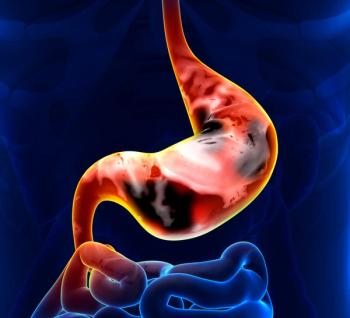
Radiolabeled Peptide Offers Surgical Method for Assessing NETs
Radioguided surgery using gallium 68 dota peptides offers a highly sensitive method for detecting neuroendocrine tumors.
Radioguided surgery (RGS) using gallium 68 (68Ga) dota peptides offers a highly sensitive method for detecting neuroendocrine tumors (NETs), according to a new study. Researchers determined a tumor to background ratio (TBR) that can be used as a cutoff for NETs that warrant surgical resection.
“A unique and important feature of NETs is that they express somatostatin receptors, which can be targeted with radiolabeled peptides for imaging and treatment,” wrote study authors led by Mustapha El Lakis, MD, of the National Cancer Institute in Bethesda, Maryland. “Positron emission tomography with computed tomography using somatostatin analogues labeled with positron-emitting 68Ga dota peptides has been shown to be more accurate than other agents for detecting many types of NETs.”
A previous pilot study showed that RGS using 68Ga-dotatate is safe and feasible in patients with gastroenteropancreatic NETs; the new study aimed to evaluate intraoperative criteria using the same technique that could define positive lesions and warrant resection. The results were
The study included a total of 44 patients (22 women, 22 men) with a total of 133 lesions detected on preoperative imaging. Of that group, 43% had a diagnosis of a pancreatic NET, 50% had a gastrointestinal NET, and 7% had pheochromocytoma or paraganglioma. The primary outcome measure was the TBR, which was obtained by normalizing to the omentum (in 106 lesions) or other solid organs (27 lesions).
Lesions that contained NETs had a higher TBR than those that did not, at 18.9 compared with 4.4 (P < .001). A receiver operating curve analysis found that a TBR of 2.5 yielded a sensitivity for determining a NET of 90% and a specificity of 25%. Using a TBR of 16, meanwhile, offered a sensitivity of 54% and a specificity of 81%.
A total of 49 of the 133 lesions (36.8%) were seen on preoperative MRI scans, and 88% of those were NETs, with a significantly higher TBR compared with lesions seen on MRI with negative histologic findings (21.0 vs 2.7; P = .04).
“A TBR of 2.5 or more is a highly sensitive threshold for guided surgical resection of suspicious lesions,” the authors concluded. “Long-term follow-up and comparison with patients who did not have 68Ga-dotatate RGS are needed to determine if such a surgical approach reduces the rate of persistent or recurrent disease.”
In an accompanying
Newsletter
Stay up to date on recent advances in the multidisciplinary approach to cancer.

















































































